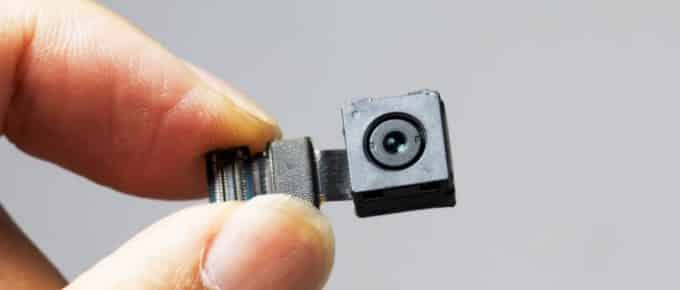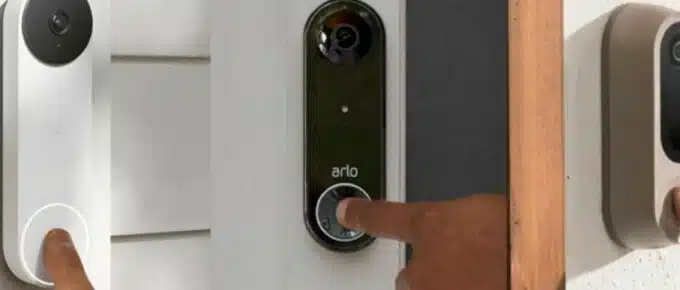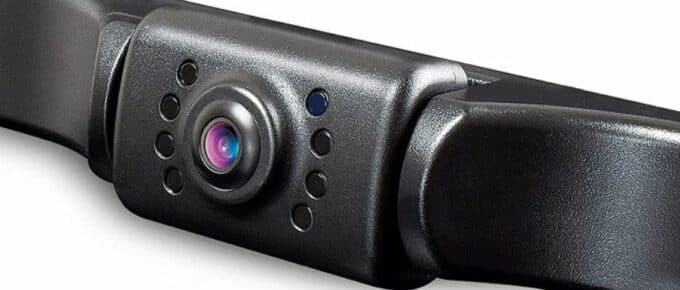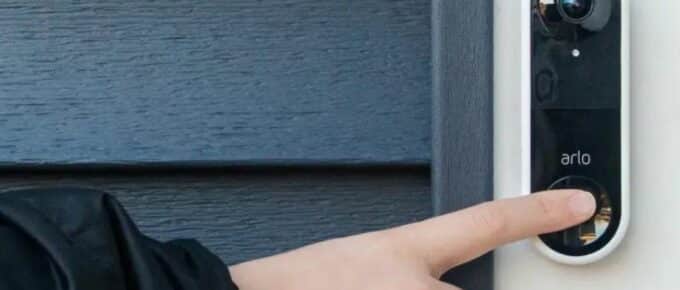The NAS (Network Attached Storage) device is one of the most important pieces of equipment that one can use at home or office. This model helps store large video & audio recording files that are produced by the home surveillance camera.
The NAS models used to store the files are important for homeowners who are worried about their safety. We have tested and reviewed a few NAS models, and highly recommend the Synology 1 bay NAS DiskStation DS118 (Diskless).
It comes with a high-performance 1-bay NAS for small offices and home users & 64-bit quad-core 1.4GHz processor. We also thought that the Asustor AS5202T – 2 Bay NAS is worth being the runner-up as it has a powerful processor & and expandable storage.
Our Top Choice (our top three)
Quick Navigation
- Synology 1 bay NAS DiskStation DS118 (Diskless) (Editor’s choice)
- Asustor AS5202T – 2 Bay NAS (Runner Up)
- Synology DS120j 1 bay NAS DiskStation (Diskless) (Budget Pick)
The Best NAS for Home Surveillance
Below are some of the best NAS for home surveillance. Any responsible homeowner would want to ensure that their homes or properties are safely covered. What better way to do this than using a NAS for home surveillance?
We reviewed some of the best NAS models in the market today and have provided a list based on that. We have made selecting the best model for any home or office simple & pretty straightforward.
Without wasting any time, the best NAS models are given below.
1. Synology 1 bay NAS DiskStation DS118 (Diskless) – Editor’s Choice
Our first product is the Synology 1 bay NAS DiskStation DS118 (Diskless). It came with several features that were hard to ignore. The Synology DS118 is a compact high-performance 1-bay NAS that allowed us to design our own private cloud.
Besides, we had full control of the data. We also found that it could enhance work productivity with additional collaboration tools and sturdy backup solutions. If there is a NAS that can perform everything with gusto, then it has to be this model.
We were highly impressed with the 1-bay NAS model for small offices and home users, and the sequential throughput of more than 113 MB/s reading and 112 MB/s writing. It has a 64-bit quad-core 1.4GHz processor that is quick enough, and we could access and sync our files seamlessly from our network.
What we liked the most were the file-sharing and syncing features. Our team member also noticed that it has comprehensive support for network file-sharing protocols. Some of them include CIFS, AFP, NFS, FTP, and others.
We noted that it allowed the entire home or office to centralize files. We could also collaborate with projects and synchronize files across multiple devices across several locations. This enabled remote teams to work together.
It let us stream 4K videos to high-definition TVs, mobile handsets, digital media players, and PC devices. Our participants could watch the multimedia library without installing a third-party player. We were able to maintain control of our data and see to it that the files are safe.
We were able to back up the files and protect them from accidental data loss. This model is an all-in-one surveillance solution offering several features like future-proof scalability and integration, intelligent monitoring, and management tools.
Users can manage and monitor video feeds through a desktop-like interface. All in all, we felt that Synology’s operating system is the USP on why it can sell so many products in the market.
We thought that it is a good product, comes nicely laid out, and has almost every feature that one could think of. Moreover, we found the installation pretty easy, their packages are easy to download and use.
It can be done using the integrated package center for the features like the ability to host a website, and media servers through DLNA, VPNs, and others. We also liked the epic configuration capability that made us want to use it.
- Support for 25 cameras.
- Quad-core 1.4 GHz CPU.
- Much sequential reading & writing.
- 1GB DDR4 memory.
- Anywhere access.
- Two free camera licenses.
- A wide range of cameras.
- Intel Celeron processor.
- No M.2 slots.
Bottom line:
Synology 1 bay NAS DiskStation DS118 (Diskless) is our editor’s choice. It comes infused with several features including support for 25 cameras, a quad-core 1.4 GHz CPU, much sequential reading & writing, and 1GB DDR4 memory.
2. Asustor AS5202T – 2 Bay NAS – Runner Up
The next product on our list of the best NAS for home surveillance is the Asustor AS5202T – 2 Bay NAS. We noticed that it is reasonably priced and comes infused with a wide range of features in it.
The model has a 2.0Ghz Dual Core CPU Boosts to 2.7Ghz in the form of the Intel Gemini Lake Celeron J4005 dual-core CPU. We were delighted to know that is 30% faster than Apollo Lake. The Celeron J4005 also doubles to 4MB, making it the fastest NAS device ever.
It also comes with an upgradable 2GB DDR4-2400 RAM. The model has two Gigabytes of DDR4 RAM and can be upgraded to 8GB. It also is 150% quicker than the 2.5-Gigabit Ethernet and offers two 2.5-Gigabit Ethernet ports.
There is also the Snapshot Center that can utilize Btrfs and iSCSI volumes that enabled us to take data to the NAS. The Snapshot Center supports up to 256 snapshots that can be done every five minutes.
We liked the fact that it came with a PC-less installation. Instead, we were able to do the mobile installation on it effortlessly. It was quite fast also. All we had to do is find the NAS, do the system initialization and installation, do ADM firmware updates, and do power management.
The model also provided a simple connection by supporting a new Internet Passthrough function. There is also a new gaming-inspired element that can be got to the model. Our team members liked the AiDownload mobile app that allowed us to use the mobile device.
Here we can add, search, and manage the download tasks when traveling around the world. The model offered us with cross-platform and multi-user access enabling a simple connection. Team members were able to connect to Windows, Mac OS X, or Unix OS.
The 4K HDR experience is amazing as it comes with a 10bit 4K hardware decoding, VP9 10bit Profile2 decoding, and HEVC decoding. We made use of the Plex Pass or a third-party player for playing the 4K HDR videos.
The maker provides users with a 3-year manufacturer warranty. Overall, the runner-up NAS model comes with plenty to offer for a top-end storage device. It has link aggregation, a 2.5Gbs network, and more traffic speed than more of the other models present at the same price point.
The Asus operating system onboard comes with several apps that can be installed for the multimedia network server.
- Snapshot center.
- PC-less software installation.
- Simple connections.
- Powerful Intel Celeron dual-core CPU.
- New Gaming-Inspired theme.
- Easy downloading.
- Live streaming with NAS.
- Stupendous 4K HDR Experience.
- DDR3L RAM can’t be upgraded.
Bottom line:
The Asustor AS5202T – 2 Bay NAS is our runner-up. It comes with some amazing features including Snapshot center, PC-less software installation, simple connections, and a powerful Intel Celeron dual-core processor.
3. Synology DS120j 1 bay NAS DiskStation (Diskless) – Budget Pick
Third, on our list of the best NAS for home surveillance, we have the Synology DS120j 1 bay NAS DiskStation (Diskless). DiskStation provides a massive storage capacity for photos, movies, and other important data.
Users can create their own private cloud and maintain complete control over their data. Synology’s DiskStation Manager (DSM) OS is one-of-a-kind. We were simply amazed to know that it was able to simplify the process of backing up PC machines, and accessing files anywhere.
The NAS model also has a cross-device file-sharing and syncing platform. There is also a wide range of networking protocols including SMB3, SMB1 (CIFS), SMB2, and others. It is also able to support browsers including Firefox, Chrome, Internet Explorer 10 onwards, Edge, and Safari 10 onwards.
It can also support Safari (iOS 10 onwards) and Chrome (Android 6.0 onwards). Our team members also noted that it provided a reliable PC backup system for Windows/macOS and photos from smartphones.
Now, users can freely access files on the go and also be able to operate them with iOS and Android mobile apps. The files could be easily accessed on the Synology NAS using the internet with QuickConnect.
Now, we were able to use the NAS as a home media hub. All our data was able to be stored on the model with ease. Our team member who tested it was able to store movies, music, and even pictures.
We were able to control all the data and keep the files safe. It makes it simple to backup files on any device that we wanted without causing any accidental data loss. We could also back up data from the DiskStation to other devices or cloud storage providers.
It can be configured for home or office security. We need to connect the IP cameras and begin to use to NAS model to monitor, manage, and save all the security details. These can be done without monthly fees.
- Has 16TB of storage.
- Over 112 MBps encrypted reading and writing.
- DiskStation Manager (DSM)
- Anywhere access.
- Easy-to-use 1-bay personal cloud storage.
- Sequential throughput.
- Wide range of networking.
- Amply supported browsers.
- Limited capacity with RAID.
Bottom line:
Synology DS120j 1 bay NAS DiskStation (Diskless) is our budget pick. It comes infused with numerous features like it has 16TB storage, over 112 MBps encrypted reading and writing, DiskStation Manager (DSM), and provides anywhere access.
4. QNAP TS-251D-2G 2 Bay Home NAS – Best Value
Our final product on our list of the best NAS for home surveillance is the QNAP TS-251D-2G 2 Bay Home NAS. The NAS model comes infused with a wide range of features & specifications. The maker is also popular throughout America, and we could find models in many homes.
Our team member was satisfied with the graphics meted out to him. Besides, it has two 3.5-inch SATA 6Gb/s, 3Gb/s (Diskless) & a single Gigabit Ethernet Port (RJ45). There are also three USB 2.0 ports, two USB 3.2 Gen 1 ports, and PCI-E expandability.
The NAS model has the PLEX integration that provides the best entertainment experience on the hardware transcoding. We were amazed at Qmedia as it was able to organize the content & multimedia console and consolidates the multimedia for simple management.
It also comes with smart photo management. The QuMagie integrates QuMagie Core AI image recognition technology that is suitable for subject identification, facial recognition, and geotagging photos.
Our team member was happy to know that it supports iOS live photos. This enables instant viewing & sharing. We were impressed with the powerful backup solutions for files, media libraries, and devices.
We could also schedule automated backups, record the system, and sync data across devices. There is also a PCIe port on the TS-251D that enables a good expansion to the NAS. It can be done with the 10GbE/5GbE/2.5GbE network expansion card, USB 3.2 Gen 2 (10Gbps) card, QM2 card, and a wireless network card.
- Intel Celeron J4005 dual-core 2.0 GHz processor.
- Intel HD Graphics 600.
- 2 GB SO-DIMM DDR4 (Max 8GB).
- 3.5-inch SATA 6Gb/s, 3Gb/s.
- USB 2.0 port.
- USB 3.2 Gen 1 port.
- PCI-E Expandability.
- It is affordable.
- Not much with RAID.
Bottom line:
The QNAP TS-251D-2G 2 Bay Home NAS is our best-value model on the list. It comes with stupendous features including an Intel HD Graphics 600, 2 GB SO-DIMM DDR4 (Max 8GB), 3.5-inch SATA 6Gb/s, 3Gb/s, and a USB 2.0 port.
Buying guide – Factors to Consider When Choosing the best NAS for home surveillance
Below are some factors that we considered before choosing the right NAS for home surveillance. Knowing them can help choose the best NAS model for your requirement. They are as follows.
- Storage requirement
We wanted to find does the NAS store backups and support redundancy. The above models came with adequate storage space. This is the first feature that most users tend to keep their eyes on.
It is vital to know how much storage space will be required, not only now, but also in the future. There are video files to be stored, and they can occupy a lot of space. But we know, the storage would be over in the NAS model.
Here, we found the Asustor AS5202T – 2 Bay NAS model ideal for storage space needs.
- Backup and support redundancy
The NAS device must provide more value and be more than a storage solution for users. The best way for that would be offering storage solutions, and also supporting the redundancy of the original files.
This helps in ensuring that nothing happens to the already saved files. The data redundancy enables to mirror of the data that is stored on the hard drive to the other. So, if one model fails, then the other can still keep all the data safely.
Here, we felt the Synology 1 bay NAS DiskStation DS118 (Diskless) model suits this requirement.
- Hard drive bays
Thirdly, we needed to know about the hard drive bays that were present on the NAS models. Users may know that NAS models can occupy more than a single hard drive. We highly recommend that users have several hard drives on the NAS to make data management easier.
The more the number of hard drive bays is there, the better flexibility and capability one can have with the RAID configurations. Two bays limits, the data stored, whereas, having four bays offers several options for storing data.
We felt that the Synology 1 bay NAS DiskStation DS118 (Diskless) model suits the feature.
- Connections to use
The next point is to note for the connections & controls that are present on the NAS. Usually, most of the NAS models come with several USB ports allowing a connection with many devices. These let us have them on the home network through the NAS model.
The NAS devices come with a single Ethernet port that can be connected to a network. Some of the top-end units can be connected to two units for redundancy. They also come with an HDMI port that let us connect to an external display.
Here, we thought that the Synology DS120j 1 bay NAS DiskStation (Diskless) model was an apt choice.
- Remote access feature
We also checked for the remote access feature on the NAS models. Users would want to know that the NAS units come with the functionality to send web-based links to others. It becomes the private storage solution.
There was no need for us to depend on other storage solutions. There is also the ability to access the NAS anywhere in the world using an Internet connection. Though most of the NAS devices do provide this feature, some models don’t, so please check it out.
The Asustor AS5202T – 2 Bay NAS model came helpful here.
- Price & warranty
Finally, we checked the price & warranty of the NAS model. We did not want to choose the models that came ridiculously priced. Yes, some models were really overpriced, though they came with stupendous features in them.
But choose an affordable model. Here we found that the QNAP TS-251D-2G 2 Bay Home NAS model was priced cheaply.
Who this is for?
A NAS is a small PC machine that is used as a backup for devices running on your local network. This includes one or two hard-drive bays, a Linux-based OS that is optimized for network storage, adequate CPU power, and RAM memory for being able to do everything.
The NAS can do everything it requires when using less amount of power than the remodeled PC device. Please note that the NAS can come with several hard drives, unlike the USB drive or the external hard drive.
It can provide the ease of copying the contents of a single drive to another one automatically and data redundancy. The NAS is like a massive library that can store all the files in a single place to stream them on PC devices, smartphones, tablets, and speakers.
The same can be said about graphic designers, music composers, and professional photographers who need access to a large amount of data from several PC machines. While several users may not require thousands of files to store, the NAS is helpful for those who do.
It can come useful when users need to upload files directly on a cloud backup service from theft. Users can also store the data in a Dropbox when they do not want to store the data on their Google Drive.
There are also added photo-management tools and file-syncing services. They also provide users with email, virtual private network (VPN) servers, and a database. Since it functions like a PC machine, it can do the same as a Linux-based PC device.
Each of the NAS models comes with its own version of Linux, and users will want to verify that aspect before delving into it. Users can consider having a NAS system when they have more than a single PC at home to back them all up and connect the external drive to each PC device.
When users want to share data on the network, then they do not require the NAS. That is because routers come with a USB port for connection purposes. But as the routers are slower than the processors, NAS can pick up where it left behind.
The setup is quite slow and ideal for basic file-sharing use. Those who are interested can also design their own NAS model if they want. The user can customize the components as they want to, and reduce the budget significantly.
How have we tested for the best NAS for home surveillance?
| Product Name | Storage requirement | Backup and support redundancy | Hard drive bays | Price | Overall score | Check Price |
|---|---|---|---|---|---|---|
| Synology 1 bay NAS DiskStation DS118 (Diskless) | 98 | 97 | 96 | 98 | 97.25 | Check Price |
| Asustor AS5202T - 2 Bay NAS | 98 | 96 | 97 | 96 | 96.75 | Check Price |
| Synology DS120j 1 bay NAS DiskStation (Diskless) | 96 | 94 | 95 | 97 | 95.5 | Check Price |
| QNAP TS-251D-2G 2 Bay Home NAS | 95 | 94 | 92 | 92 | 93.25 | Check Price |
The first thing that we did was we checked whether they came with the install guide. Yes, we suggest that users ensure that the NAS models came with the guide. When the unit did not have one, then we automatically rejected it.
Unlike other products, the NAS home surveillance is a technically advanced system, and the model should come with an installation guide. Of course, the good news is that all the NAS models had an installation guide with them.
Then we took a look at the web interface specification and features. Our team members and participants tested ease of use by configuring the user and group accounts. We also did the file and folder access permissions to find out more about the model.
We noticed whether the models could provide a secure cloud service for remote access. This can immensely aid the process without us having to fiddle around with the port forwarding and static IP addresses.
Not to mention, our team members also verified the iOS and android mobile apps access for administering the NAS. We found out that the simplest method to find real-world NAS performance would be to copy files to and from the NAS.
Then we had to calculate the data rate. For that, we had to install drives on the NAS models and then connect them to a top-end router. Then we connected it to a medium-performance PC device, with Gigabit Ethernet to another port.
When the NAS had dual ethernet ports, it was connected to the router, and we enabled the link aggregation. The Windows 10 Robocopy file-copying tool to read and write the datasets, which is built-in.
The size of the files may vary, and we did several tests on them to find out the actual performance. The tests were done with the encryption turned off, with in-flight SMB encryption turned on, and with the encryption turned on.
We wanted to simulate the drive failure as well. To do that, we removed the drive from the NAS model when it was in the operation. The NAS model must beep or flash an LED to alert if something is wrong with it.
We were able to see the drive-failure notification on the interface. We would have been happier when NAS helped us to set up SMS or email alerts. When the drive fails and the NAS does not produce the notification, then there may be a risk of data loss.
We replaced the drive with a better unit and noticed that the NAS model was able to detect it. Please note that the NAS model must be able to detect the new drive, and then automatically be able to do the needful.
Readers may want to know that each NAS comes with a RAID 1 mirror or RAID 5 array. Besides, we were also able to find out the quality of each NAS device’s drive bays. A reliable NAS model has drive slots that enabled us to remove the drives from there.
We wanted to ensure that the drives are robust and that they can fit inside securely. We also connected a flash drive to the USB ports, and the NAS interface must be able to detect it. we are delighted to say that the NAS model was able to recognize it and allowed file transfer between the NAS and the USB drive.
We also noted that the NAS models came with a power-saving feature in them, which was a nice thing. Our participants made use of a Kill A Watt EZ to test the power consumption when they were doing tasks when it had its energy-saving, and when it was idle.
How does a NAS do surveillance?
A NAS does surveillance by running on a Linux system. The NAS is a PC device that operates on the Linux operating system that has been designed by the maker (Synology, QNAP, Asus, etc.). The makers provide different apps that can be installed on their devices.
Users can also add or extend their abilities on them. We found out that the apps are called stations. Some examples include backup stations, photo stations, video stations, and surveillance stations.
We felt that QNAP has a good one around its neck with the release of the QVR Pro. This model is a good alternative to its own surveillance station app. The primary use of the QVR Pro is that it comes having 8 free IP camera channels, whereas the QNAP surveillance station and sinology surveillance station are limited to only 4 free channels.
How to take care of NAS?
We noticed that the first step when setting up the NAS is that it prompted us to log in to its interface through a browser. This is done with the “admin” account. However, there is no password required to do that.
Please understand that usually a few NAS devices only will suggest changing or resetting the password. It is a vitally important step for security purposes as the NAS connects to the internet, and it can be a potential target for threats.
We decided to change the password on the admin account for the new NAS. We may tell you that both QNAP and Synology will suggest users do this when they are in the initial setup. Hence, we have to check the update notifications on the NAS each time.
The maker provides instructions on how to update. It ensures that the product is protected from unwanted threats. Some of them include QSnatch or QLocker. We were pleasantly surprised to note that the present QNAP NAS operating systems come with a malware remover that can be updated automatically.
However, firmware updates for both can be hardened against the usual threats. We suggest that users design a unique user account for those who want to access the NAS. This is a good idea. It can be done on NAS devices by going into the user settings in the interface.
Please make sure that the user is provided with the right kind of permission so that other users do not confuse with each other. This is just a safety measure and to ensure that everybody does not necessarily have too much access to the NAS on the admin.
When somebody wants the ability to upload files to the NAS, the user needs to have the required permissions. Besides, when the user wants to only download files, then the owner can make them a read-only user.
We learned that maintaining the NAS does not require a lot of effort. However, some things have to be kept in mind because the NAS is always switched on, and we suggest that it is placed in a location where it does not get necessarily hot.
Users might want to make sure that it gets proper airflow. We did that by ensuring the back panel has a few inches of clearance not to block the exhaust fan that is present in there. If at all, something goes wrong with the NAS, then it can be the drive failure.
NAS research has shown that temperature increase is the root cause of hard-drive failure. Besides, we also noticed that data corruption is another major headache for the hard drive. Most NAS devices ship diskless, and users have to then install their own drives.
We suggest that users may want to check the compatibility list of hard drives. It can be found on the NAS website where supported drives will be installed. When something goes wrong with the NAS, users may not get reliable customer support, and they have been voided the warranty.
We feel the same for the memory. When a user has got the NAS for adding the RAM, then please first make sure it can be added to the supported memory as well. Only then, the user may want to go ahead.
What about all other NAS enclosures?
There are plenty of NAS enclosures that we could have chosen from, but it is quite easier to make a better decision, than getting a NAS for Plex use. Please make sure that the NAS enclosure that you get supports IP cameras and can handle more than a single stream.
We may also want to let you know that you can choose a NAS enclosure that doesn’t come from QNAP or Synology too. These brands were chosen because they support IP cameras quite well, and are moreover, very popular.
Why should you trust us?
Our main editor has more than 19 years of experience writing about storage, PCs, networking products, and personal tech. He also worked as an IT consultant in a top 5 organization for 8 years, before moving to write for a living.
You can trust us because we write data that is solely based on the research that we have done. Of course, we refer to other websites, and reviews, and take information from online retail sites, but still, we do our own research, analysis, and testing.
Our team members, participants, and editors research the popular models that are being sold in the market. We have also interviewed NAS experts to make sure that we have found the best models.
We have taken their advice on the best NAS for home surveillance models and based on that, we have conducted our research. Our team members, participants, and editors have installed the models in their homes and noted down their experiences.
We wrote the review based on their experiences using it at home, and that enabled us to get the results that we expected. It was done so that we could understand how the models did in real-life situations.
If you have read our reviews, then you might have noticed that we like to concentrate on the drawbacks. We do that to make sure that information given on other reviews, websites, and online retail sites is accurate.
FAQs
1. Can you use a NAS for security cameras?
You can use the Network attached storage and NAS for security cameras. They are quite flexible and can be used for a wide range of tasks including home surveillance, file storage, and media streaming.
2. What is NAS storage for CCTV?
The NAS storage for CCTV or the NVR (network video recorder) as it is known, can handle the storage, bandwidth, and other demands of the surveillance network. It is an essential element of the CCTV device to work opulently well.
3. Are NAS drives good for surveillance?
Without a doubt, the NAS drives are good for surveillance purposes. The surveillance rigs come with more than one drive in them. It comes in the form of a RAID configuration, and the surveillance drives may not be as good as they should be in the NAS as drives are configured for NAS use.
4. Can home NAS be hacked?
Sadly, the home NAS can be hacked. Though they are extremely useful devices to have at your home, they can get hacked with some effort, albeit. It happens when you connect your hard drives to a network that can provide access to the hacker.
You might have heard about attacks on business firms, and organizations. However, attacks on individuals are uncommon because they do not serve any purpose or use to the hacker. So, homeowners can consider themselves safe.
5.Is it worth buying NAS for your home?
When you are not sure about the security presence in and around your home property, then you might want to access files from more than one computer. This device is a shared storage point for several users for accessing files and helps you to attach many workstations for projects.
Conclusion
These are the best NAS for security models that we have provided according to their storage capabilities and performance. We found these units extremely capable of storing large recordings on the surveillance cameras.
Please remember the buying guide, when choosing the best NAS for home surveillance. These points can help you take a wise decision. We suggest that you consider the storage you would require, backups, and supports redundancy.
Besides, we suggest getting the model that comes with the most drives. If we were to recommend the NAS devices given on the above list, then we would gladly suggest the Synology 1 bay NAS DiskStation DS118 (Diskless).
We felt that it comes with the perfect balance between available bays, decent storage, options for redundancy, and performance. We would also like to highly recommend the Asustor AS5202T – 2 Bay NAS. This model also is very capable and comes with amazing features including a powerful processor & and expandable storage.











Leave a Reply